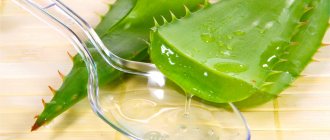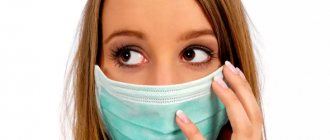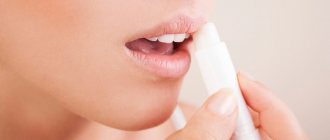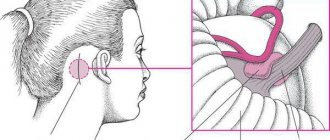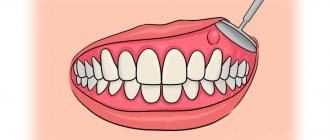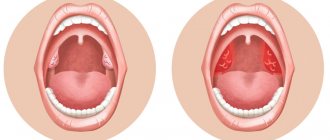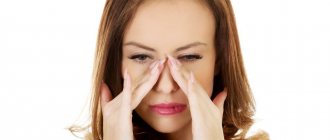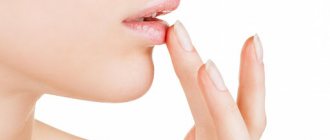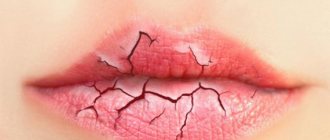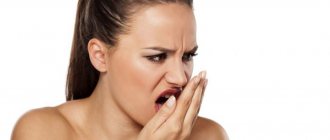Exfoliative cheilitis is an inflammation of the lips, and only the border of the lips is affected, becoming bright red, painful and irritated. To date, there is no consensus regarding the origin of the disease. Most researchers tend to believe that the cause of its occurrence is a combination of neurogenic factors. According to statistics, the majority of patients diagnosed with exfoliative cheilitis are women between twenty and forty years old.
Many patients suffering from exfoliative cheilitis have a history of psycho-emotional disorders. A significant percentage of cases are associated with depressive states, neuroses and autonomic dysfunctions. Among the provoking factors there are also immunological, endocrine and hereditary predisposition factors.
The disease has no tendency to remission or self-healing, assumes a long course and can transform over time from one form to another.
What it is
Chronic damage to the red border of the lips, in which peeling and irritation does not spread to the surrounding tissues, is called exfoliative cheilitis. Women of childbearing age are most susceptible to this disease.
Doctors distinguish two forms of exfoliative cheilitis:
- The dry form is accompanied by chronic dry lips, peeling, and sometimes itching and burning. Often, hyperemia begins between the mucous and red border, resulting in the formation of a dense strip consisting of transparent scales at this border. When this layer is surgically removed, the unprotected surface of the rich red mucosa is exposed. Most often it is smooth to the touch, but it may develop shallow ulcerations or bumps.
- The exudative form differs from the dry form by sharply enlarged, swollen, hyperemic lips. The patient cannot close his mouth completely due to pain, as a result of which his lips are constantly parted. This form of exfoliative cheilitis got its name due to the constant release of exudate, which gradually dries out and forms massive crusts. In most cases, they are quite easy to remove, but sometimes the exudate and scales can grow together, forming a continuous layer hanging down to the chin.
Not all patients believe that the dry form requires treatment in the same way as the exudative one, as a result of which the disease quickly becomes chronic and can last for many years. In addition, both forms of the disease can transform into one another, but very rarely spontaneous recovery occurs. Some people mistakenly consider this type of disease to be precancerous.
GLANDULAR CHEILITIS OF THE LIP
Glandular cheilitis
– a disease of the lips, which is characterized by the close location of the small salivary glands to the red border area and their increased functioning.
People usually get sick after 30 years of age.
The lower lip is affected twice as often as the upper lip.
Injuries and impaired elasticity of lip tissue contribute to the disease.
At the onset of the disease, patients experience slight dryness of the lips and peeling.
As the disease progresses due to erosions and cracks, the pain intensifies, red dots appear on the mucous membrane of the lip - the end sections of the excretory ducts of the salivary glands. Drops of saliva are released from the points in the form of dew, due to the evaporation of which constant dryness develops. Sometimes an infection can occur, even leading to the formation of abscesses.
There are two forms of glandular cheilitis:
primary
secondary.
Primary is not associated with other lip diseases.
Provoking factors for primary glandular cheilitis include tartar, periodontal disease, dental caries, etc. These diseases can lead to infection of the salivary gland ducts.
Secondary glandular cheilitis develops against the background of various diseases in individuals without congenital anomalies of the minor salivary glands.
This form of the disease includes: lichen planus, leukoplakia, lupus erythematosus, etc.
The course of the disease is long.
Treatment
Treatment of glandular cheilitis is surgical: removal or cauterization of each salivary gland in various ways.
Cauterization using a surgical laser is successful.
Anti-inflammatory ointments are used locally: tetracycline, erythromycin, as well as flucinar and sinalar ointments, oxalic ointment, etc.
Treatment of secondary glandular cheilitis involves timely and correct treatment of the underlying disease that was its cause.
Prevention
In order to prevent glandular cheilitis, it is necessary to regularly sanitize the oral cavity, eliminate dry lips, and treat dental caries in a timely manner.
(495) 50-253-50 – free consultation on clinics and specialists
SUBMIT AN APPLICATION FOR TREATMENT
- Dentistry in Germany – Musenhof Clinic
- Dentistry in Israel
- Dental implantation and prosthetics in Hungary
- Therapy – dental treatment
- The structure of the human tooth
- Teeth – milk and permanent
- Caries
- Carious defect - prevention
- Carious defect - treatment
- Caries - preparation techniques
- Seals
- Cement fillings
- Amalgam fillings
- Seal – light
- Glass ionomer cement and composites
- Root canals - treatment
- Stomatitis - symptoms, treatment
- Periodontitis - treatment
- Pulpitis - causes, treatment, prevention
- Tooth pulpitis – initial
- Tooth pulpitis – acute
- Tooth pulpitis – chronic
- Tooth pulpitis – purulent
- Tooth pulpitis – chronic hyperplastic
- Depulpation
- Tooth crown – trepanation
- Gum retraction procedure
- Anesthesia in dentistry
- Anesthesia – application
- Anesthesia – infiltration
- Anesthesia – conduction
- Insulating gaskets for filling
- Therapeutic pads for filling
- Surgery – operating dentistry
- Dental cyst
- Treatment of dental cyst
- Pericoronitis of teeth
- Lip frenuloplasty
- Reasons for tooth extraction
- Tooth – removal
- Wisdom tooth – removal
- Resection of the apex of the tooth root
- Replantation – tooth transplant
- Gum diseases
- Gingivitis – inflammation of the gums
- Gingivitis - acute form
- Gingivitis - chronic form
- Gingivitis - ulcerative form
- Gingivitis – hyperplastic form
- Periodontitis - symptoms, treatment
- Periodontal disease - causes of inflammation
- Flap surgery – gum surgery
- Widmann-Neumann operation
- Operation Ramfjord
- Lateral displacement of the flap
- Coronally advanced flap technique
- Curettage of gum pockets
- Dental splints – splinting
- Vestibuloplasty - methods of implementation
- Vestibuloplasty method - according to Edlan-Meicher
- Vestibuloplasty – according to Clark
- Vestibuloplasty – tunnel
- Operation frenuloplasty
- Osteoplasty – surgical technique
- Gum plastic surgery – gingivoplasty
- Compactosteotomy – surgery of the alveolar process
- Gingivotomy operation
- Gingivectomy operation
- Inflammation of the gums - abscess
- Oral stomatitis – gonorrheal
- Cheilitis on the lips
- Cheilitis - treatment
- Exfoliative cheilitis of the lips
- Meteorological cheilitis of the lips
- Contact allergic cheilitis of the lips
- Lips – chronic crack
- Eczematous cheilitis of the lips
- Atopic cheilitis of the lips
- Glandular cheilitis of the lips
- Hypovitaminous cheilitis of the lips
- Hyapocylar cheilitis of the lips
- Macrocheilitis - causes, treatment
- Macrocheilitis – Miescher syndrome
- Diseases of the human tongue
- Glossitis – groups
- Desquamative glossitis of the tongue
- Black fuzzy tongue
- Diamond-shaped glossitis of the tongue
- Folds on the tongue
- Neuroses of the tongue
- Glossodynia – causes, treatment
- Pemphigus - treatment
- Pemphigus vulgare
- Hyperplastic candidiasis
- Atrophic candidiasis
- Pseudomembranous candidiasis
- Atrophic candidiasis - acute stage
- Actinomycosis - forms, treatment
- Leukoplakia - types, treatment
- Xerostomia - treatment
- Orthodontic treatment
- Malocclusion - causes
- Malocclusion - stages of correction
- Malocclusion - correction in children
- Malocclusion - correction in adults
- Deep bite - treatment
- Types of bracket systems
- Metal bracket system
- Ceramic bracket system
- Sapphire bracket system
- Self-ligating braces
- Bracket system – DAMON Clear
- Lingual braces
- Bracket system – Clarity SL
- Lingual braces systems Incognito
- Removable braces
- Colored braces
- Bracket system – Ormco
- Installation of bracket systems
- Care of the bracket system
- Dental aligners – invisalign
- Malocclusion - surgical correction
- Contraindications to treatment with braces
- Orthodontic structures
- Lip bumpers - application
- Devices – quadrohelixes
- Sapphire bracket systems Inspire ICE
- Dental prosthetics
- Prosthetics - indications
- Prosthetics - contraindications
- Prosthetics - methods
- Prosthetics - technologies
- Prosthetics – permanent
- Dental crowns - types
- Metal crowns
- Metal-ceramic crowns
- All-ceramic crowns
- Plastic crowns
- Zirconium dioxide crowns
- Gold-ceramic crowns
- Dental bridge
- Adhesive prosthesis – no grinding of adjacent teeth
- Methods for installing dental bridges
- Dental bridge – without crown support
- Clasp prosthetics
- Types of clasp prosthetics
- Prosthetics – removable
- Acrylic dentures
- Polyurethane dentures
- Quattro Ti prostheses
- Relining of removable dentures
- Dental inlays - types
- Prosthetics – preparing a tooth for a crown
- Restoring a tooth stump - methods
- Prosthetics – pain relief
- Dentures - care
- Dental implantation
- Dental implantation - history of development
- Indications for dental implantation
- Contraindications to dental implantation
- Dental implantation methods
- Types of Dental Implants
- Types of Dental Implants
- Root-shaped dental implants
- Endodontically stabilized implants
- Plate implants
- Combined implants
- Subperiosteal implants
- Intramucosal inserts
- Jaw bone augmentation
- Tests before dental implantation
- Stages of dental implantation
- Dental implantation – preparation
- Implant installation
- Abutment
- Dental implantation – healing
- Dental implantation - installation of a prosthesis
- Dental implantation – one-step
- Before dental implantation – radiography
- Sinus lift
- Sinus lift – balloon method
- Guided bone tissue regeneration - technique
- Bone tissue – autotransplantation
- Dental implantation – basal
- Dental implantation – transgingival
- Dental implants – mini implants
- Dental implantation – laser
- Dental implantation – 3D
- Dental implants – implant systems
- Dental implants – Astra Tech
- Dental implants – Alpha BIO
- Dental implants – MIS
- Dental implants – NIKO (LIKo)
- Dental implants – Bicon
- Dental implants – Nobel Biocare
- Dental implants – Implantium
- Dental implants – Gimlet system “RADIX”
- Dental implants – Biohorizons
- Dental implants – service life
- Dental implants - care
- Dental implantation - complications
- Dental implantation - complications during surgery
- Dental implantation – complications of the second stage of surgery
- Dental implantation – penetration
- Dental implantation – damage to the mandibular nerve
- Dental implantation – early postoperative complications
- Dental implantation – late postoperative complications
- Aesthetic dentistry - directions
- Air flow teeth cleaning
- Veneers - types
- Veneers – composite
- Veneers – ceramic
- European methods of dental implantation in Moscow
- Dental treatment in South Korea
- Dental treatment in Spain
- Dental treatment in Kassel
- Dental treatment in Frankfurt
- Dental implantation – a complex method
- Dentistry in Moscow
- Treatment of caries in Germany
- Dentistry at the medical center named after. Souraski
April 20, 2014 Maxim
This disease develops as a result of hyperplasia, hyperfunction and often heterotypy of the salivary glands in the area of the red border of the lips and the transitional fold. There are primary and secondary simple glandular cheilitis .
Causes
According to research results, the main cause of the development of exfoliative cheilitis is a disruption of the central nervous system, accompanied by depression, nervous exhaustion, apathy, phobias and other psychosomatic reactions. In addition, some doctors share the view that genetic abnormalities and systemic allergic reactions are involved in the development of this disease. The possibility of a sharp decrease in immunity cannot be ruled out.
In some patients, this type of cheilitis occurs due to problems with the thyroid gland. Another suspected reason is an increase in the permeability of capillary walls. However, the pathogenesis and etiology of exfoliative cheilitis are still not fully understood.
Symptoms
The main signs of exfoliative cheilitis are dryness, flaking and itching that do not extend beyond the red line of the lips. The mucous membrane of the oral cavity, the corners of the lips and the skin around them are not affected. The main manifestation of the dry form is the formation of scales, which the patient most often simply bites off, not attaching importance to the disease and without consulting a doctor. After removing the scales, a red, hyperemic surface remains, on which scales form again within a week.
In the exudative form, the symptoms are characterized by the presence of pain, the formation of gray and brownish crusts of scales and dried exudate, which complicate eating and communication.
How the problem manifests itself
HC “announces itself” with classic symptoms - characteristic red dots appear on the border of the lips (seen in the photo above). These are nothing more than the mouths of the salivary glands affected by the disease. If you blot your lips, after a short period of time droplets of secretion will appear on them again. Due to the fact that saliva is produced in excess of normal, the surface of the lips is constantly moisturized. But due to the constant evaporation of liquid, the skin, accustomed to “humidity,” cracks and flakes.
Secondary GC is a complication of skin diseases, pathological processes in the oral cavity, the result of smoking and neglect of the rules of caring for teeth and gums
In some patients, the course of HC is associated with constant itching in the affected area. At the same time, the “affected” skin looks rough, unhealthy, the epithelium becomes keratinized and dry. White ring-shaped formations often appear around the mouths of the salivary glands - these are foci of leukoplakia. The purulent form of cheilitis most typically manifests itself. Thus, the lips swell, become extremely sensitive to any mechanical damage, and are very painful.
On examination, the skin looks red, swollen, thinned, flaky, the epithelium is covered with multiple purulent crusts. Upon palpation, enlarged, compacted salivary glands are determined, when pressed, a secretion mixed with purulent exudate is released. In the complicated course of Volkmann's cheilitis, local signs of inflammation are accompanied by symptoms of general intoxication of the body, enlargement of the submandibular lymph nodes, and abscess formation of the lips.
Diagnostics
To make a correct diagnosis, the doctor must be able to distinguish the manifestations of exfoliative cheilitis from other types (eczematous, actinic, contact, atopic), as well as from the symptomatic picture of lupus erythematosus. Unlike all of the listed diseases, this type of lesion is not accompanied by the formation of blisters, erosions, cracks, scars and other lesions, with the exception of those listed above, and does not spread beyond a certain part of the red border of the lips. The transition of this type of cheilitis to others is also not noted; only an internal transition from one form to another is possible.
Treatment
If you are diagnosed with exfoliative cheilitis, treatment should be comprehensive. The prescription of drugs will depend directly on the probable cause of the disease. The psycho-emotional cause involves treatment with antipsychotics, antidepressants and even tranquilizers. In addition, the patient needs to seek professional help from a neuropsychiatrist.
To eliminate scales, crusts and itching, it is recommended to constantly lubricate your lips with oil solutions, creams or hygienic lipstick. If you have other symptoms (dizziness, lump in the throat, shaking hands, dry mouth), it is recommended to get tested for thyroid hormones and begin appropriate treatment.
Among other things, immunocorrection and the use of vitamin-mineral complexes would be useful. In difficult cases, the doctor may prescribe local administration of hormonal drugs through ultrasound or laser therapy. With long-term treatment, the exudative form can turn into dry.
Symptomatic cheilitis in children
Hypovitaminous cheilitis is manifested by cracks on the lips. The disease develops due to a deficiency of retinol and B vitamins. Cracks can occur as a result of non-compliance with general hygiene rules, the habit of licking or biting lips. Treatment: use of mucosal epithelium reparants - carotolin, rosehip oil, retinol.
Eczematous cheilitis is a symptom of a general eczematous process in which the surface layers of the skin become inflamed. Its treatment involves the use of steroid ointments. As soon as the condition improves, the doctor may recommend ointments such as naphthalan, sulfur-tar or boron-tar.
Macrocheilitis is manifested by cracks, pallor, swelling of the lips, and the appearance of scales. Treatment is carried out using hyposensitizing drugs, hormones, antibiotics, ointments with heparin and dimexide.
Atopic cheilitis is accompanied by swelling, itching, peeling, swelling, and erythema. After some time, crusts form. Treatment - antibacterial and antihistamines, anti-inflammatory drugs, ointments with corticosteroids, vitamins. It is necessary to limit carbohydrates and avoid spicy foods.
Prevention
Since it is impossible to predict the development of exfoliative cheilitis, the only means of prevention will be oral hygiene, proper nutrition, a healthy lifestyle, giving up bad habits and taking a course of vitamins in the autumn-winter period. It is necessary to carefully monitor the immune system and take timely measures to restore it. Also, do not overuse lipsticks containing lanolin, as it clogs pores, dries out lips and often causes an allergic reaction.
